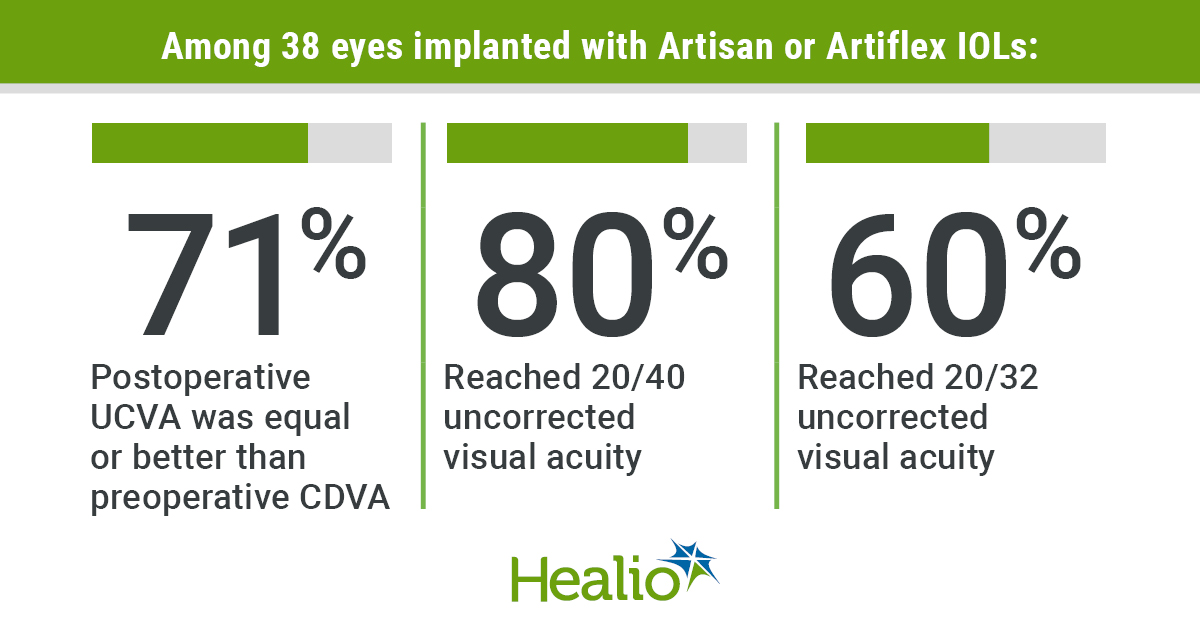Iris-claw phakic IOLs show good outcomes in eyes with corneal ectasia

MARRAKECH, Morocco — Implantation of an anterior chamber iris-claw phakic IOL effectively improves vision in patients with keratoconus and pellucid marginal degeneration, according to one surgeon.
“Since CXL was introduced in 1996, the procedure has become gold standard, and there is an increasing population of young patients with keratoconus classified as stable. However, CXL does not significantly improve vision,” Isaak Fischinger, MD, said at the European Society of Cataract and Refractive Surgeons Winter Meeting
Contact lenses are still gold standard in these cases, but not all patients tolerate them. Surgical methods include laser refractive surgery and phakic IOLs.
“In our clinic, we have a good experience with the Artisan and Artiflex IOLs (Ophtec). They are both a good option in nonprogressive cases of corneal ectasia,” Fischinger said.

He presented the retrospective analysis of 38 eyes of 22 patients, age 33 years on average, 24 implanted with the Artisan or Artiflex for keratoconus and 14 with pellucid marginal degeneration (PMD) or PMD-like ectasia. Average preoperative maximum keratometry reading was 51 D. Requirements were anterior chamber depth of at least 3.2 mm, endothelial cell count of at least 2,000 cells/mm2 (higher for younger patients), ectasia stable for at least 6 months and an interval of 12 months from cross-linking.
“At week 6 postop, there was a very nice shift from high myopic values towards zero. The mean absolute error decreased from 5.7 D preop to 1.25 D postop, which is a highly significant improvement,” Fischinger said.
Postoperative uncorrected visual acuity was equal or better than preoperative corrected distance visual acuity in 71% of patients, improved in about one-third of patients, with 80% reaching 20/40 and 60% reaching 20/32; only one eye lost one line.
“Looking for predictive factors, we found that eyes with PMD and PMD-like ectasia benefit significantly more from these lenses than keratoconus eyes, as well as eyes with mild to moderate ectasia,” Fischinger said.
A longer follow-up will allow researchers to draw more reliable conclusions on the outcomes of these phakic IOLs over time. – by Michela Cimberle
Reference:
Fischinger I, et al. Outcome of phakic anterior chamber lens implantation in patients with corneal ectasia. Presented at: European Society of Cataract and Refractive Surgeons Winter Meeting; Feb. 21-23, 2020; Marrakech, Morocco.
Disclosure: Fischinger reports no relevant financial disclosures.

